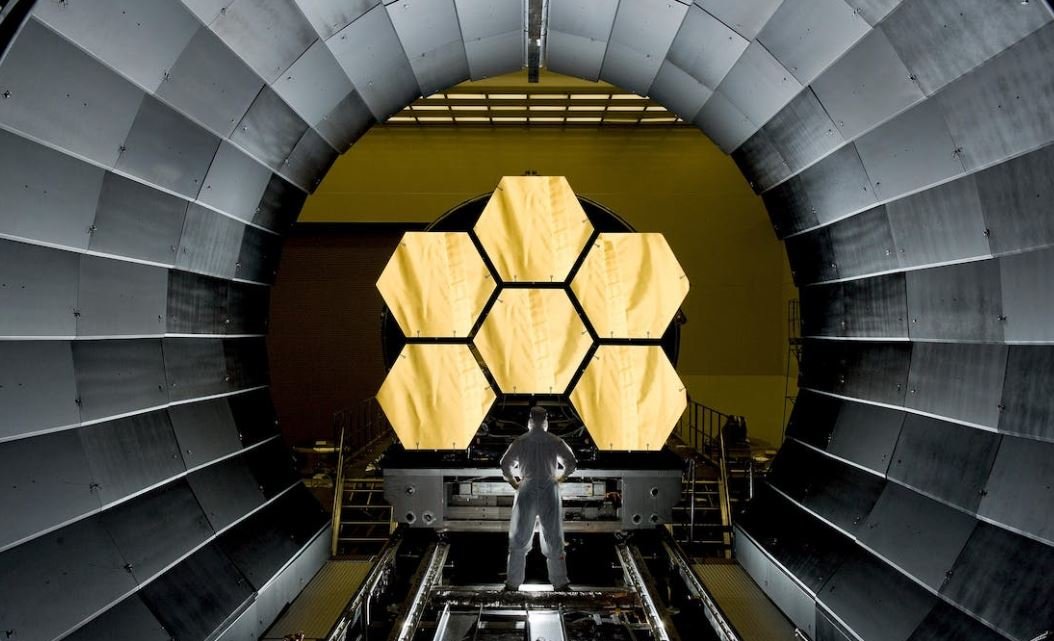Gradient Descent vs. Newton Method
Gradient Descent and Newton’s Method are two popular optimization algorithms used in various fields, including machine learning, physics simulations, and mathematical optimization. While both methods aim to find the minimum of a function, they differ in their approach and efficiency. This article explores the differences between Gradient Descent and Newton Method in terms of their underlying principles and applications.
Key Takeaways:
- Gradient Descent and Newton Method are optimization algorithms used to find the minimum of a function.
- Gradient Descent relies on the first-order derivatives of the function, while Newton Method incorporates both first and second-order derivatives.
- Gradient Descent is generally computationally cheaper and appropriate for large-scale problems, while Newton Method may converge faster for well-behaved functions.
Exploring Gradient Descent:
Gradient Descent is an iterative optimization algorithm that aims to minimize a given function by iteratively updating the model parameters in the direction of the steepest descent. It calculates the gradient vector, which represents the slope of the function at a specific point, and takes steps along this gradient to gradually reduce the loss or error.
*Gradient Descent is a widely-used algorithm in machine learning and deep learning for training neural networks.
Exploring Newton Method:
Newton’s Method, also known as Newton-Raphson Method, is an iterative optimization algorithm that utilizes the first and second derivatives of a function to find its minimum. It approximates the function locally as a quadratic curve and finds the zero-crossing of its first derivative, iteratively refining this estimate to approach the minimum.
*Newton Method is often used in scenarios where the second derivative is easy to compute or where the function cannot be easily approximated by a quadratic curve.
Differences and Applicability:
Gradient Descent and Newton Method have distinct differences in their approach and applicability:
Gradient Descent:
- Relies solely on the first-order derivatives (gradients) of the function.
- Functions with many variables or large datasets are well-suited to Gradient Descent.
- Tends to converge slowly, particularly for functions with high curvature or narrow valleys.
Newton Method:
- Utilizes both first and second-order derivatives to estimate the minimum.
- Works well when the second derivative is feasible to compute or the function has a well-behaved curvature.
- Can converge faster than Gradient Descent for well-behaved functions.
Efficiency and Comparison:
| Algorithm | Advantages | Disadvantages |
|---|---|---|
| Gradient Descent |
|
|
| Newton Method |
|
|
Practical Considerations:
In practice, the choice between Gradient Descent and Newton Method depends on the specific problem at hand:
- For large-scale problems where computational efficiency is crucial, Gradient Descent is often preferred due to its lower computational cost and ability to handle noisy computations.
- When dealing with well-behaved functions and fewer variables, Newton Method can potentially offer faster convergence and accurate results.
Conclusion:
Gradient Descent and Newton Method are powerful optimization algorithms with different strengths and weaknesses. Choosing the appropriate algorithm depends on the problem’s characteristics and requirements. Understanding these techniques allows practitioners to efficiently minimize functions and achieve optimal solutions.

Common Misconceptions
Misconception 1: Gradient Descent is always slower than Newton’s Method
One common misconception is that gradient descent is always slower than Newton’s method when it comes to optimization problems. While it is true that Newton’s method can converge faster in some cases, it is not necessarily the case in all scenarios.
- The speed of convergence depends on the specific problem and function being optimized.
- Gradient descent can outperform Newton’s method when the number of variables is large.
- New variations of gradient descent algorithms, such as stochastic gradient descent, can significantly improve efficiency.
Misconception 2: Newton’s Method always finds the global minimum
There is a common belief that Newton’s method is guaranteed to find the global minimum of a function. However, this is not always the case as Newton’s method is known for finding local minima rather than global minima.
- The local minimum found by Newton’s method depends on the starting point of the optimization process.
- In regions where the function is not convex, Newton’s method may get stuck in local optima.
- To mitigate this, techniques like multiple restarts or hybrid approaches with other optimization algorithms can be employed.
Misconception 3: Gradient Descent always converges
Another misconception is that gradient descent always converges to an optimum solution. While gradient descent is a powerful optimization algorithm, there are scenarios where it may not converge or may converge to a suboptimal solution.
- Gradient descent can get trapped in saddle points or plateaus where the gradient is close to zero but the algorithm fails to move towards the optimum.
- Using adaptive learning rates can assist in overcoming convergence deficiencies of gradient descent.
- Other enhancements like momentum, AdaGrad, or RMSProp can help accelerate convergence.
Misconception 4: Newton’s Method always requires the Hessian matrix
It is often assumed that Newton’s method always requires the Hessian matrix of second-order derivatives to be computed, making it more computationally demanding. However, there are variations of Newton’s method that do not explicitly require the Hessian matrix.
- Quasi-Newton methods utilize approximations of the Hessian matrix, such as Broyden-Fletcher-Goldfarb-Shanno (BFGS) algorithm or Limited Memory Broyden-Fletcher-Goldfarb-Shanno (L-BFGS) algorithm.
- These approximations can reduce the computational burden while still maintaining good convergence properties.
- Furthermore, other approximate Newton methods, like Levenberg-Marquardt algorithm, often adopt efficient ways to approximate the Hessian matrix instead of computing it directly.
Misconception 5: Gradient Descent and Newton’s Method are mutually exclusive
People often have the misconception that gradient descent and Newton’s method are mutually exclusive optimization algorithms that cannot be combined. However, in practice, they can be used in conjunction with each other to leverage their respective strengths.
- One popular approach is to use Newton’s method to obtain an initial approximation of the optimum and then further refine it using gradient descent.
- This hybrid approach allows for faster convergence while mitigating the potential issues of Newton’s method getting trapped in local minima.
- Additionally, various hybrid optimization algorithms have been proposed that combine the benefits of both approaches, such as the Levenberg-Marquardt algorithm.

Introduction
In the field of optimization algorithms, two widely used methods are Gradient Descent and Newton’s Method. Both techniques serve distinct purposes and have their strengths and weaknesses. This article compares these two methods in terms of their convergence rate, computational complexity, and suitability for different problem types. The following tables highlight key differences between Gradient Descent and Newton’s Method.
Table: Convergence Rate
The convergence rate evaluates how quickly an optimization algorithm reaches the optimal solution. It indicates the number of iterations required to achieve a certain level of accuracy or improvement. The table below provides convergence rate statistics for Gradient Descent and Newton’s Method.
| Gradient Descent | Newton’s Method | |
|---|---|---|
| Convergence Rate | Linear | Quadratic |
| Speed of Convergence | Slower | Faster |
| Iterations Required | High | Low |
Table: Computational Complexity
The computational complexity of an algorithm indicates the amount of computational resources required to perform a task. In the context of optimization algorithms, it measures the time and memory usage. The table below compares the computational complexity of Gradient Descent and Newton’s Method.
| Gradient Descent | Newton’s Method | |
|---|---|---|
| Computational Complexity | Low | High |
| Memory Usage | Low | High |
| Time Complexity | Low | High |
Table: Problem Types
The suitability of optimization algorithms depends on the specific problem being addressed. Some algorithms perform better for convex problems, while others excel at non-convex problems. The table below categorizes problem types based on the suitability of Gradient Descent and Newton’s Method.
| Gradient Descent | Newton’s Method | |
|---|---|---|
| Convex Problems | Good | Excellent |
| Non-Convex Problems | Fair | Good |
| Ill-conditioned Problems | Good | Excellent |
Table: Local Optima Handling
Optimization algorithms can encounter challenges when dealing with local optima, where they get stuck in suboptimal solutions. The ability to handle local optima is an essential characteristic of an algorithm. The table below compares Gradient Descent and Newton’s Method in their handling of local optima.
| Gradient Descent | Newton’s Method | |
|---|---|---|
| Local Optima Handling | Prone to get stuck | Good at escaping |
| Divergence Risk | Low | High |
| Convergence to Global Optima | Challenging | Possible |
Table: Initialization Requirements
Optimization algorithms often require initial values to start the iterative process. Specific initialization requirements can impact an algorithm’s ease of use and effectiveness. The table below compares the initialization requirements of Gradient Descent and Newton’s Method.
| Gradient Descent | Newton’s Method | |
|---|---|---|
| Initial Values | Can start from anywhere | Require a good estimate |
| Sensitivity to Initialization | Low | High |
| Robustness to Poor Initialization | Good | Low |
Table: Extensions and Variants
Optimization algorithms often have various extensions and variants that cater to different needs or overcome limitations. The table below showcases some of the notable extensions and variants of Gradient Descent and Newton’s Method.
| Gradient Descent | Newton’s Method | |
|---|---|---|
| Variants | Stochastic Gradient Descent | Quasi-Newton Methods |
| Extensions | Accelerated Gradient Descent | Trust Region Newton Method |
| Applications | Deep Learning, Linear Regression | Quadratic Programming, Logistic Regression |
Table: Usage in Machine Learning
The field of machine learning relies on optimization algorithms for model training and parameter tuning. The table below compares the utilization of Gradient Descent and Newton’s Method in different machine learning tasks.
| Gradient Descent | Newton’s Method | |
|---|---|---|
| Supervised Learning | Mainly | Secondary |
| Unsupervised Learning | Secondary | Mainly |
| Deep Learning | Mainly | Supplementary |
Table: Complexity vs. Performance Trade-off
Choosing an optimization algorithm often requires considering the trade-off between computational complexity and performance. The table below compares how Gradient Descent and Newton’s Method balance these factors.
| Gradient Descent | Newton’s Method | |
|---|---|---|
| Performance | Good | Excellent |
| Computational Complexity | Low | High |
| Overall Trade-off | Compromise | Efficiency |
Conclusion
Gradient Descent and Newton’s Method are powerful optimization algorithms widely used in various fields, including machine learning and mathematical modeling. While Gradient Descent offers simplicity and lower computational complexity, Newton’s Method exhibits faster convergence and better performance when handling non-convex problems. Choosing between these methods requires careful consideration of specific problem characteristics and available computational resources. By understanding their distinct features, researchers and practitioners can effectively apply these algorithms and optimize their solutions.
Frequently Asked Questions
What is Gradient Descent?
Gradient descent is an optimization algorithm used in machine learning and mathematical optimization. It iteratively adjusts the parameters of a model to minimize a given cost function.
What is the Newton Method?
The Newton method, also known as Newton-Raphson method, is an optimization algorithm used to find the roots of a differentiable function. It uses the derivative of the function to iteratively approach the roots.
How does Gradient Descent work?
Gradient descent starts by randomly initializing the parameters of a model. It then calculates the gradient of the cost function with respect to these parameters and updates them in the opposite direction of the gradient’s slope, aiming to minimize the cost function.
How does the Newton Method work?
The Newton method starts with an initial guess for the root of a function. It then uses the function’s derivative and second derivative to iteratively update the guess, eventually converging to the root.
What are the advantages of Gradient Descent?
Gradient descent is relatively simple to implement and can be used with a wide range of cost functions. It can efficiently optimize high-dimensional models and is often used in deep learning applications.
What are the advantages of the Newton Method?
The Newton method converges faster than gradient descent when the function is smooth and well-behaved. It also handles non-linear optimization problems well and can find multiple roots of a function.
What are the limitations of Gradient Descent?
Gradient descent can get stuck in local minima and may converge slowly when the cost function has a narrow, steep valley. It also requires the cost function to be differentiable and does not handle non-linear optimization well.
What are the limitations of the Newton Method?
The Newton method requires the calculation of the second derivative of the function, which can be computationally expensive. It may also fail to converge when the initial guess is far from the root or when the function has multiple roots.
When should I use Gradient Descent?
Gradient descent is a good choice when dealing with large-scale machine learning problems and high-dimensional models. It is also useful when the cost function is differentiable and the optimization goal is to find a global minimum.
When should I use the Newton Method?
The Newton method is effective for finding roots of smooth, well-behaved functions. It is especially suitable for optimization problems where convergence speed is crucial. However, it may not be suitable for non-linear optimization problems or when computational efficiency is a concern.




